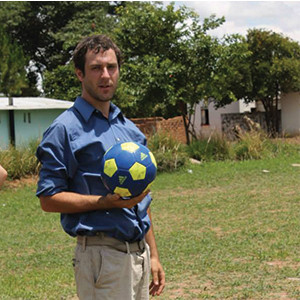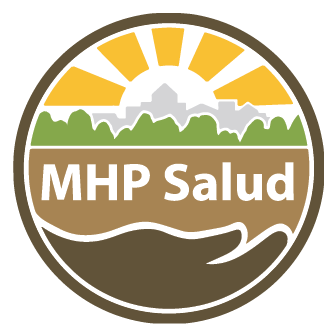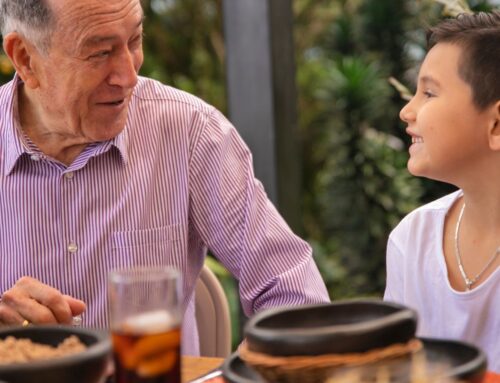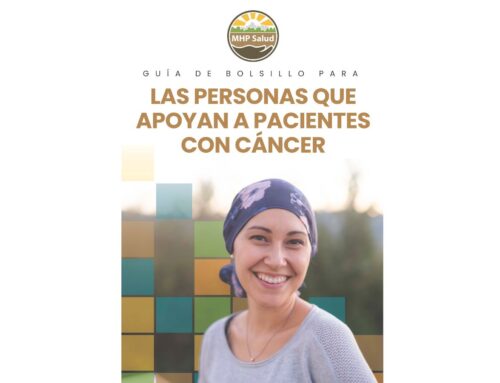Crafting the Business Case for Community Care
Crafting the Business Case for Community Care

“I was biking all around town in the dark buying more time in these little shops,” he said. “I just walked in, cleared out their shops, biked back to the office really quickly and loaded the time to finish the interview.”
A couple weeks later, he got the job, and by November of 2014, he was set up in his office as MHP Salud’s new Research, Evaluation and Technology Lead in Pasco, Washington.
Brad joined Peace Corps after earning a master’s degree in science and public health from Emory University in Atlanta.
“I was frustrated to learn about inequality in opportunities for health care around the world,” he said, “and the Peace Corps provides the opportunity to better a community for others and do meaningful work.”
Over his two years in Zambia, Brad ran health education programs about HIV and malaria prevention and family planning services. In his free time, he coached for an after-school soccer program.
“After spending the past two years in a place where so many people had absolutely zero health care, it can be difficult to be back here in one of the most resource-rich countries in the world and still see people who can’t access basic healthcare,” he said.
In his new role at MHP Salud, Brad took his experience running health programs in resource-limited areas to analyzing the efficiency of health programing the United States on MHP Salud’s new Community Health Worker (CHW) Return-on-Investment (ROI) project.
The CHW ROI Project, part of MHP Salud’s Capacity-Building Assistance program, funded by the Health Resources and Services Administration, is focused on developing a market justification for CHW programs to help Federally-Qualified Health Centers that serve migratory and seasonal agricultural workers to see them as an investment rather than an expense.
As CHW programs evolve and become increasingly present across the country, there is a strong push for collecting CHW program outcome and cost-effectiveness data. CHW programs are capable of supporting the pillars of health care reform: reducing costs, improving care and improving outcomes.
It has been well-documented that CHW programs benefit patient health outcomes and increase patient access to care (Norris et al. 2002). There is also plenty of anecdotal evidence that CHWs impact patients’ ability to better navigate the healthcare system through the strong relationships they are able to form with community members. The missing piece is documenting the cost-savings data by measuring the cost of a CHW program against the savings that result from the health outcomes brought about by that program.
Developing an ROI for CHW programs can be challenging due to the nature of the programs themselves and the less-than-traditional health work in which CHWs engage. CHWs are typically from the communities they serve and provide key insights and context to community challenges, strengths and resources not inherent in typical programs. They function as a bridge between their community and health resources, by establishing trusting relationships with the people they interact with. These key attributes of CHWs are difficult to quantify or monetize. Additionally, the diversity of CHW programs and activities and their implementation mean there is no one-size fits all ROI calculation to apply.
With this in mind, Brad spent December reaching out to Federally-Qualified Health Centers that receive Migrant 330(g) funding in order to find participants for the study who could produce both financial and health outcome data regarding their CHW program and its impact.
“We looked for applicants who are consistent in evaluation and tracking their outcomes, who offer their patients a host of resources, who have been around for a while and who are enthusiastic,” said Brad.
He whittled down the 20 applicants to three Health Centers with CHW programs, and he will begin analyzing the programs’ retrospective ROI data for the 2014 year.
After that, Brad’s team will recommend program modifications that may increase programs’ ROI, such as improved record keeping, more reliable ways to follow patients from CHW contact to treatment or looking at different ways information collected by CHWs can be added to a patient’s electronic medical record.
Once this data is collected and analyzed, MHP Salud will publish a tool for Federally-Qualified Health Centers to calculate the ROI of their own CHW programs.
“I think it could be a really powerful tool for programs who are struggling to maintain funding,” said Brad, “because they can use it both internally and with their funders to justify the programs and to show that they’re not only helping patients access care, but that they can also help clinics save money.”
About MHP Salud
MHP Salud has over thirty years of experience implementing CHW programs and training organizations looking to start and/or strengthen their own CHW programs. For more information about MHP Salud, our services, and how we can help you, please email us at info@mhpsalud.org







